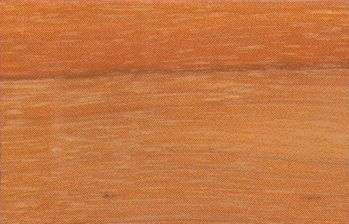
Nganga (Parinari goetzeniana)
Family: Chrysobalanaceae
Common names: Nganga
Distributed in: South Africa (Africa)
Common uses: Agricultural implements, Flooring: commercial heavy traffic, Heavy construction, Joinery, Light construction, Mine timbers, Poles, Railroad ties
Tree size: Trunk diameter is 100-150 cm
Colors: the heart isPurple, Redand the sapwoodWhite to yellow, Yellow.The grain isStraight, the textureMediumand the lusterMedium
Natural durability: Susceptible to marine borer attack, Very durable
Silica Content: Severe
Kiln Schedules: Dry at a slow speed
Kiln Drying Rate: Very slow
Drying Defects: Slight twist/warp, Splitting
Ease of Drying: Variable
Tree Identification: Bole/stem form is cylindrical
Blunting Effect: Moderate
Boring: Fairly easy to very easy
Carving: Fairly Difficult to Very Difficult
Cutting Resistance: Gum-Up
Gluing: Fairly Easy to Very Easy
Mortising: Fairly Easy to Very Easy
Moulding: Very Good to Excellent
Movement in Service: Very Good to Excellent
Nailing: Pre-Boring Recommended, Very Good to Excellent
Planing: Very Good to Excellent
Resistance to Impregnation: Sapwood is permeable
Response to hand tools: Responds Readily
Routing recessing: Very Good to Excellent Results
Sanding: Very Good to Excellent Results
Veneering qualities: Veneers easily, Veneers moderately easy
Steam bending: Fair to Good Results
Screwing: Fairly Easy to Very Easy, Pre-boring recommended; Turning: Very Good to Excellent Results
Polishing: Very Good to Excellent; Staining: Fairly Easy to Very Easy; Varnishing: Fairly Easy to Very Easy;
- Numerical data Metric
- Numerical data English
- Strength properties
- References
 |
 |
 |
 |
| Item |
Green |
Dry |
Metric |
| Specific Gravity |
|
|
|
| Density |
|
913 |
kg/m3 |
| Bending Strength |
654 |
1024 |
kg/cm2 |
| Crushing Strength |
275 |
449 |
kg/cm2 |
| Hardness |
|
752 |
kg |
| Impact Strength |
|
|
cm |
| Shearing Strength |
|
121 |
kg/cm2 |
| Stiffness |
102 |
118 |
1000 kg/cm2 |
| Tangential Shrinkage |
|
|
% |
| Radial Shrinkage |
3 |
|
% |
| Weight |
897 |
721 |
kg/m3 |
| Maximum Load |
|
|
cm-kg/cm3 |
| Toughness |
|
|
cm-kg |
| Static Bending |
|
|
kg/cm2 |
|
 |  |  |  | | Item | Green | Dry | English | | Bending Strength | 9310 | 14566 | psi | | Density | | 57 | lbs/ft3 | | Hardness | | 1658 | lbs | | Maximum Crushing Strength | 3916 | 6397 | psi | | Shearing Strength | | 1721 | psi | | Stiffness | 1460 | 1686 | 1000 psi | | Weight | 56 | 45 | lbs/ft3 | | Radial Shrinkage | 3 | | % | | Tangential Shrinkage | 5 | | % | |
Max. crushing strength = medium
Density (dry weight) = 53-60 lbs/cu. ft
Bending strength (MOR) = medium
Shearing strength (parallel to grain) = low
Shrinkage, Tangential = very small
Shrinkage, Tangential = small
Shrinkage, Radial = very small
Shrinkage, Radial = small
Modulus of Elasticity (stiffness) = low
Density (dry weight) = 61-67 lbs/cu. ft
Shrinkage, Tangential = moderate
Shrinkage, Radial = moderate
Shearing strength (parallel to grain) = medium
Modulus of Elasticity (stiffness) = medium
Hardness (side grain) = medium
Banks, C.H., Schoeman, J.P., Otto, K.P.,1977,The Mechanical Properties of Timbers with particular reference to South,Africa,South African Forestry Research Institute Bulletin,(Ed.,Schoeman, J.P. 1973 & Otto K.P. 1976,No.48Bolza, E., Keating, W.G.,1972,African Timbers - the Properties, Uses and Characteristics of 700 Species,C.S.I.R.O. Div. of Building ResearchBryce, J. and Kitambi, G.,1960,The Air-drying Properties of some Tanganyika Timbers Technical Note No 23,Tanganyika Forest Department Utilisation Division Technical NoteMurira, K.,1984,Natural Durability Tests of Tanzanian Timbers 1955 - 1982,Tanzania Forestry Research Institute, Timber Utilisation Research Centre,,Moshi.Takahashi, A.,1978,Compilation of Data on the Mechanical Properties of Foreign Woods (Part,III) Africa,Shimane University, Japan, Research Report on Foreign Wood No. 7
|








